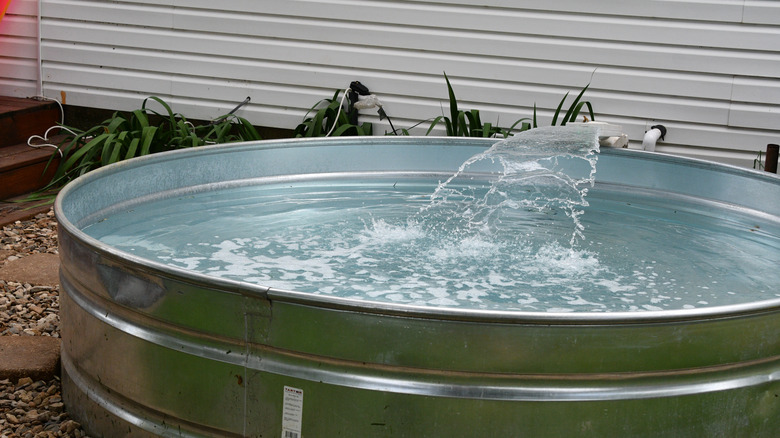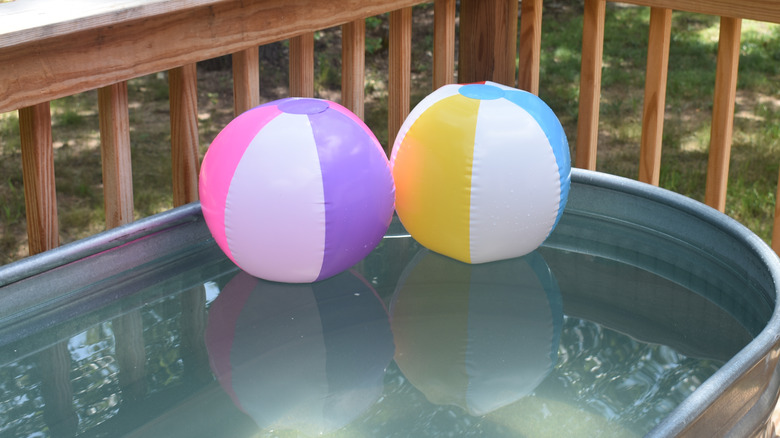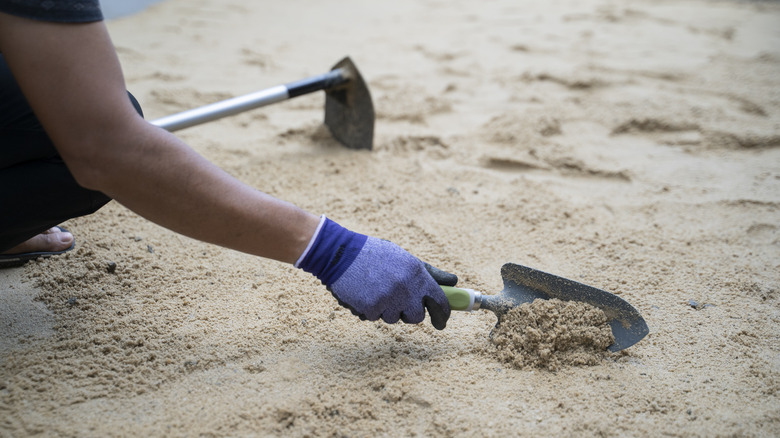Things You Shouldn't Overlook Before Installing A Backyard Stock Tank Pool
It may only take a little bit of miserable weather to make you consider adding a stock tank pool to your backyard — one that could keep you warm in the winter and cool in the summer. But there are a few things you shouldn't overlook before you buy a stock tank pool, including prepping your space and checking local regulations.
Compared to traditional pools, stock tanks are much more accessible, while offering some of the same recreational benefits. Stock tank pools can be as cheap as a few hundred dollars if you DIY, while in-ground pools can easily cost tens of thousands. Stock tanks are comparatively easy to set up; you can even take the pool with you when you move. Originally designed for farms, they also have a rustic look that many people find more desirable than plastic portable pools. They come in a range of sizes, but most are just a couple feet deep. However, installing a stock tank pool still requires some upfront research and caution to avoid problems.
Do stock tanks require permits?
In many parts of the U.S., you need to obtain a building permit before installing a traditional pool, even if it's above-ground. You may also have to follow specific rules, like installing the pool a certain distance away from your house and creating safety barriers around the pool, as well as undergoing a safety inspection after construction.
Stock tanks may or may not need this clearance depending on where you live. They are typically only two feet deep, don't require complex plumbing or electrical hookups, and aren't permanent structures. While many municipalities don't require permits for them at all, some do. For instance, a permit is not required in New York City as long as the dwelling does not exceed 400 square feet; meanwhile, residents of Litchfield Park, Arizona, will need a permit (there are, however, exceptions for portable pools that have a maximum depth of 18 inches). Check your local building codes to make sure, as well as the regulations of your homeowners' association (HOA), if you belong to one. Many HOAs have strict rules on what you can add to your property, and stock tanks may or may not be permissible.
Site prep is crucial before installing a backyard stock tank pool
A leveled surface is essential for your stock tank pool. If you don't already have a flat surface available, you can level the area yourself or hire a landscaper. Many people create a foundation pad for the pool with compacted granite, concrete, or pavers. Even a slight discrepancy in level leads to the water surface being irregular, which in turn creates an uneven weight distribution on the tank. It also needs to be able to handle the weight of all that water — potentially hundreds of gallons, depending on the size of the pool. If you decide to build on a deck, make sure it can withstand that burden. Check that the site is free of any jagged rocks, stumps, or other objects, as these can dent the bottom of the pool under its heavy weight.
You need a site close to an electrical outlet so you can plug in your pool pump, which is essential for keeping your stock tank pool clean and pest-free. Also, consider whether you want your pool water to be on the warm or cold side. A stock tank in a sunny area will heat up quickly, while one in the shade will have icy water all day. A sweet spot is a location that gets a few hours of shade each day.


